Evidence-Based Toe Spacer Recommendations: What the Research Actually Uses
Evidence-Based Toe Spacer Recommendations: What the Research Actually Uses
After covering all the science and safety, here's the practical question: which toe spacers align with the research findings? Let's look at what the studies actually used and what the evidence suggests about different product categories.
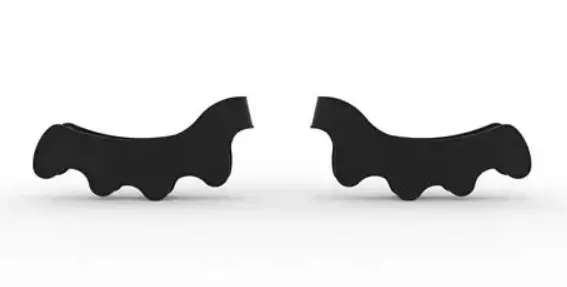
The Research-Referenced Products
The scientific literature doesn't extensively review specific brands, but certain products have been mentioned in research contexts. Based on our comprehensive research analysis, here's what aligns with actual scientific findings:
Active Use Category: Correct Toes
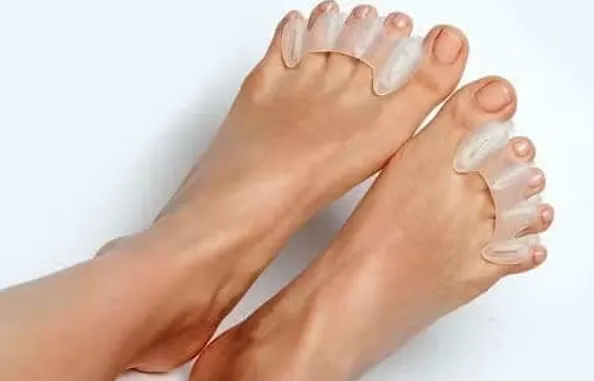
Research Context: Specifically mentioned in studies as designed for active, weight-bearing use inside appropriately sized footwear.
Evidence-Based Features:
- ✅ Designed for shoe wear during activities
- ✅ Made from medical-grade silicone
- ✅ Can be worn during weight-bearing exercise (where research suggests greatest benefit)
- ✅ Allows natural toe spread without forcing extreme positions
Research Relevance: Studies showing structural improvements (like the network meta-analyses) typically involve spacers used during active, weight-bearing activities—which this design supports.
Considerations:
- Higher price point (~$65-75)
- Requires properly fitting footwear (wide toe box essential)
- May require adjustment period for tolerance
Passive Use Category: Yoga Toes
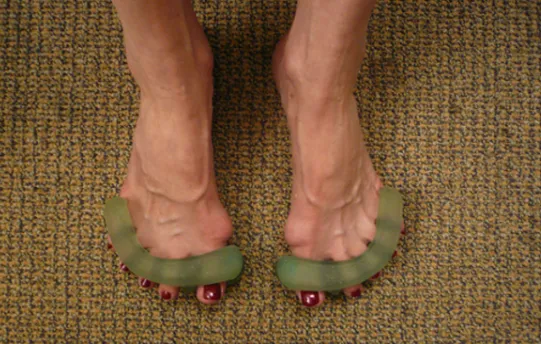
Research Context: Mentioned as an example of bulky spacers designed only for rest/recovery use.
Evidence-Based Features:
- ✅ More aggressive toe separation for passive stretching
- ✅ Durable construction for repeated use
- ❌ Cannot be worn in shoes (limits to passive benefits only)
Research Relevance: Limited to the benefits achievable during non-weight-bearing rest periods.
Considerations:
- More affordable (~$20-30)
- Only useful during sitting/lying periods
- May be too aggressive for some users initially
Professional-Grade Options
Custom-Molded Spacers (Podiatrist-Made)
Research Context: Studies specifically mention custom devices made from materials like Otoform K silicone putty.
Evidence-Based Advantages:
- ✅ Precise fit for individual foot anatomy
- ✅ Targeted pressure relief for specific problems
- ✅ Professional assessment ensures appropriate use
- ✅ Integration with comprehensive treatment plan
When Research Suggests Custom Options:
- Complex foot deformities
- Specific pressure point issues (interdigital corns)
- Failed response to generic options
- High-risk individuals who need medical supervision
For detailed guidance on bunion management with custom options, see our comprehensive bunion guide.
3D-Printed Custom Spacers
Research Context: Emerging technology mentioned in recent studies for personalized toe spreaders.
Current Status:
- Limited availability
- Typically research or specialty clinic settings
- Represents future direction of personalized orthotic care
Evidence-Based Selection Criteria
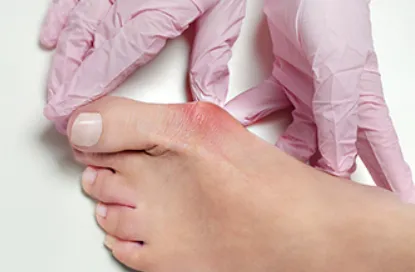
Based on research findings, here's how to evaluate any toe spacer:
Material Considerations
The Research Finding: Soft vs. hard materials produce opposite biomechanical effects on muscle activation.
Practical Application:
- Soft/flexible materials generally better for most applications
- Medical-grade silicone preferred over generic gel materials
- Avoid overly rigid options unless specifically prescribed
Design Features That Matter
Active vs. Passive Capability:
- ✅ Can be worn in shoes = potential for greater benefit
- ❌ Too bulky for footwear = limited to passive stretching
Toe Separation Philosophy:
- ✅ Gentle, natural spacing aligned with foot anatomy
- ❌ Extreme separation that forces unnatural positions
Durability and Hygiene:
- ✅ Easy to clean and maintain
- ✅ Maintains shape over time
- ✅ Non-toxic materials safe for extended skin contact
Budget-Conscious Evidence-Based Options
Generic Silicone Spacers: When They Might Work
Research Context: While not specifically studied, basic silicone spacers can provide benefits IF they meet evidence-based criteria.
What to Look For:
- Soft, flexible silicone (not hard gel)
- Anatomical shape that doesn't force extreme positions
- Size options to match your foot anatomy
- Slim profile that might work in wide shoes
Realistic Expectations:
- May provide symptomatic relief
- Unlikely to match precision of custom options
- Good for trial/experimentation before investing more
Price Range: $10-25
When Generic Options Make Sense
Trial Period:
- Testing tolerance before investing in premium options
- Determining if toe spacers help your specific condition
- Learning what features matter for your feet
Simple Applications:
- Basic interdigital skin protection
- Mild bunion pressure relief
- General toe stretching during rest
Red Flags: Products to Avoid
Based on research findings and safety considerations:
Overly Aggressive Designs
- Extreme toe separation beyond natural anatomy
- Rigid materials that don't accommodate individual variation
- "One size fits all" claims for complex foot problems
Unsubstantiated Claims
- Promises permanent structural correction without exercise
- Claims to treat conditions lacking research support (like plantar fasciitis)
- Guarantees universal effectiveness for all foot problems
Safety Concerns
- Unknown materials or manufacturing standards
- Designs that concentrate pressure rather than distribute it
- Products marketed to high-risk populations without medical oversight
The Custom vs. Commercial Decision
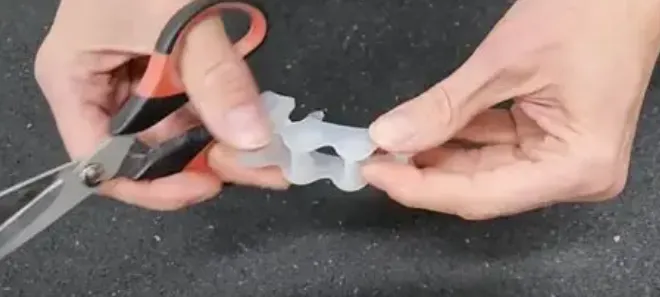
Choose Commercial Options When:
- ✅ Healthy individual experimenting with toe spacers
- ✅ Mild, straightforward symptoms like minor bunion discomfort
- ✅ Budget constraints make custom options prohibitive
- ✅ Trial phase before committing to comprehensive treatment
Consider Custom Options When:
- 🎯 Complex foot problems requiring precise intervention
- 🎯 Failed response to well-chosen commercial options
- 🎯 High-value activities where optimal function matters
- 🎯 Professional treatment plan that includes spacers as one component
Implementation Strategy by Product Type
For Correct Toes or Similar Active-Use Spacers
Phase 1: Adaptation (Weeks 1-4)
- Start with 30 minutes daily
- Use during light activities initially
- Ensure proper footwear accommodation
- Monitor for any adverse reactions
Phase 2: Integration (Weeks 5-12)
- Gradually increase wearing time
- Use during targeted foot exercises
- Incorporate into daily activities
- Assess functional improvements
Phase 3: Optimization (3+ months)
- Strategic use based on activities and symptoms
- Combine with comprehensive foot health program
- Ongoing evaluation of benefits vs. alternatives
For Yoga Toes or Similar Passive-Use Spacers
Recommended Use:
- 15-30 minutes daily during rest periods
- While doing foot exercises or stretches
- Evening relaxation routine
- Recovery periods after activities that compress toes
Integration Tips:
- Combine with manual toe stretches
- Use while doing other foot strengthening exercises
- Include in comprehensive foot care routine
- Monitor for gradual improvements in toe flexibility
The Bottom Line Recommendations
For Most People Starting Out:
- Try a quality generic option first ($15-25 range) to assess basic tolerance and benefit
- If helpful, consider upgrading to active-use design like Correct Toes
- If problems persist or are complex, seek professional evaluation for custom options
For Serious Foot Problems:
- Start with professional evaluation to understand what you're treating
- Consider custom options as part of comprehensive treatment plan
- Use commercial options only as adjuncts to professional care
For High-Risk Individuals:
- No self-selected products without medical clearance
- Professional fitting and monitoring essential
- Custom options only under appropriate medical supervision
Quality vs. Price Considerations
When Premium Price May Be Worth It:
- You're committed to long-term use
- You need active-use capability
- You have specific foot conditions that respond well to spacers
- You're part of a comprehensive treatment program
When Budget Options Are Reasonable:
- You're experimenting to see if spacers help
- You only need passive-use stretching
- You have straightforward, mild symptoms
- You're using spacers temporarily while addressing root causes
💡 Smart Shopping Strategy: Start with evidence-based criteria, not brand loyalty. The "best" toe spacer is the one that matches your specific needs, risk profile, and usage goals based on current research findings.
Important Reminder: These recommendations are based on research context and evidence-based criteria, not comprehensive product testing. Individual results vary significantly, and professional consultation remains the gold standard for complex foot problems or high-risk individuals.
Comments
Post a Comment